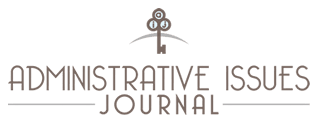
Introduction
As we prepare to wrap up the 2015-16 academic year here in Oklahoma, we are faced, like many public universities across the country, with a deepening budget crisis that feels at best like a foreboding of significant reduction in opportunities, and at worst, a forerunner to drastic cuts that could threaten the core mission of public higher education. As the editors and publishers of an open-access journal, nestled under the umbrella of a land-grant university, we are subject to the same vicissitudes of budget uncertainties as any other academic service department on campus.
Our response is telling. We have invited Dr. Amanda Evert, from the Department of Business & Computer Science, to join us as our new Editor-at Large. For the first time, we are designing a special section for an upcoming issue based on feedback and ideas generated from our October 2015 conference. Finally, we have retooled our mission statement to clarify our belief in the importance of inter-disciplinary work as it relates to the practice of administration. In other words, our response to the fiscal challenges posed in this season of budgetary threats is to become more creative, more flexible, and more focused.
In an online environment, our faculty and students have come to expect, justifiably or not, immediate and full access to the vast universe of peer-reviewed journal articles. According to Ulrich's Serials Analysis System, there are an estimated 24,000 peer-reviewed journals currently publishing academic content. The spiraling cost of the subscription publication model has led, and continues to lead, to a reduction of access instead of an increase in access to much of this content—a complete upending of the technological promise of digital technologies. In response, the open access movement has grown steadily and creatively, though not without problems. The most significant questions surrounding the open access publication model no longer revolve around sustainability (i.e. we are approaching our sixth year), but are now focused on impact.
The journal Nature is carrying out a study using a sample from a 10-year period involving 14 million articles, from across all disciplines, harvested from the Institute for Scientific Information database. Findings from the field of physics show that articles that are freely available are being cited 2.5 to 5 times more than articles taken from subscription databases. Many of these articles were originally published under the subscription model, but were then self-archived independently on the web by the authors through central disciplinary archives (physicists use something called ArXiv). The most interesting development, and one germane to this letter, is the growth of digital institutional archives hosted and run by universities.
In order to increase both access and the impact of scholarly work, the work itself needs to be discoverable and from a trusted source. Beginning immediately, every issue of Administrative Issues Journal will be housed permanently in the new Southwestern Oklahoma State University Digital Commons, the institutional archive run by the Al Harris Library. Once the library tags the articles with metadata protocols developed by the Open Archive Initiative, each article published by AIJ will be discoverable and accessible through search engines such as OAIster, the giant union catalog long familiar to information professionals.
In response to the challenges inherent in working in Higher Education, determined academics will always find a way to get the point across; education and scholarly activity are important. Creative, flexible and focused is the path we have chosen to chart for our coming issues.
Articles
Letter from the Editor—Discovery, Access & Archives: Responding to the Challenges of Higher Education
Frederic Murray
A Model for Online Support in Classroom Management: Perceptions of Beginning Teachers
Credence Baker, James Gentry, and William Larmer
Building Currency: Crafting New Channels for Undergraduate Communication Programs
Vickie Shamp Ellis, Kaylene Barbe, and Kalyn G. Fullbright
Professionalization of Teaching in America: Two Case Studies Using Educational Research Experiences to Explore the Perceptions of Preservice Teachers/Researchers
James E. Gentry, Credence Baker, and Holly Lamb
Managerial Cognitive Moral Development and the Firm's Owners' Salience: Empirical Evidence
Aleksey Martynov and Sergey Logachev
Improved Student Outcomes in a Flipped Statistics Course
Laura Phillips and Mark Phillips
Citizenship Education in the United States: Perspective Reflected in State Education Standards
Rebekkah Stuteville and Helen Ikerd Johnson
If You Are Like Me, I Think You Are More Authentic: An Analysis of the Interaction of Follower and Leader Gender
Sandra Tibbs, Mark T. Green, Esther Gergen, and Jared A. Montoya
